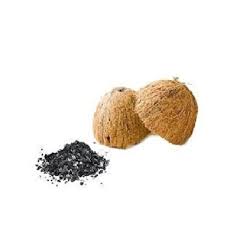Coconut Cultivation and Innovative Waste Management Strategies
Coconut trees, known for their resilient nature and multifaceted utility, contribute significantly to various industries and local economies worldwide. Understanding the intricacies of coconut planting and efficient coconut waste disposal is imperative for sustainable agricultural practices and environmental conservation.
Coconut Condition and Planting Strategies
The success of coconut planting hinges upon meticulous attention to the coconut condition. Optimal planting necessitates healthy, disease-free coconuts with viable seeds. Selecting suitable soil types, such as well-draining sandy loam, and ensuring adequate sunlight and moisture facilitate the germination and growth of coconut palms.
In certain regions, farmers resort to innovative propagation techniques like embryo culture or tissue culture to preserve the genetic integrity and vitality of coconut varieties, thereby optimizing coconut conditions for cultivation. The coconut shell charcoal making machine can be a good recycling solution.

Coconut Shell To Charcoal
Sustainable Cultivation and Harvesting
Sustainable agricultural practices in coconut planting emphasize the utilization of organic fertilizers, intercropping methods, and integrated pest management. These strategies minimize environmental impact while enhancing soil fertility and coconut condition. Employing modern technologies for irrigation and mechanized harvesting further streamlines the cultivation process, ensuring efficient yield while preserving the ecosystem.
Coconut Waste Disposal: Challenges and Solutions
Post-harvest, addressing coconut waste disposal becomes pivotal. Coir, derived from coconut husks, presents both an opportunity and a challenge in waste management. Traditionally discarded or burnt, innovative approaches advocate for repurposing coir waste. Through processes like biodegradation and composting, coir can transform into valuable organic matter beneficial for soil enrichment. More information on charcoal machine here.
Efforts have surfaced to convert coconut husk waste into biodegradable products such as mulch mats, erosion control nets, or even as a component in manufacturing eco-friendly textiles and construction materials. These initiatives not only mitigate environmental pollution but also add value to the coconut waste disposal chain.
Circular Economy and Resource Optimization
Embracing the concept of a circular economy, where waste serves as a resource, the coconut industry endeavors to extract maximum value from every part of the coconut. Beyond coir, coconut shells and empty fruit bunches undergo processing for activated carbon production or biochar, contributing to water purification, air filtration, or soil amendment.
Moreover, innovative utilization of coconut water and its derivatives has garnered attention in food and beverage industries, cosmetic applications, and even as a natural fertilizer, augmenting economic value while reducing coconut waste. Check the biochar machine here.
Environmental Impact and Conservation Efforts
While the coconut industry offers numerous opportunities, it is essential to address potential environmental repercussions. Large-scale coconut cultivation may lead to deforestation, soil erosion, and loss of biodiversity. Sustainable farming practices, reforestation initiatives, and conservation programs are imperative to mitigate adverse impacts and safeguard ecosystems.
Conclusion
In conclusion, the synergy between effective coconut planting and strategic coconut waste disposal defines the sustainable trajectory of the coconut industry. Maximizing yield while minimizing environmental impact remains the crux of this endeavor. Through innovation, technology, and concerted efforts towards sustainable practices, the coconut sector can evolve as a beacon of environmentally responsible agriculture, ensuring a balanced ecosystem and a thriving industry for generations to come. See the Beston Group here.
- Wood Charcoal Making Machine Brings Solutions to Garden Waste Biomass Management
- Use Thermal Desorption To Process Oil Sludge